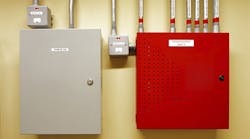Generally, you must install an overcurrent protection device (OCPD) at the point of conductor supply [240.21]. Under seven conditions described in Sec. 240.21(A) through (H) of the National Electrical Code (NEC), you don’t have to. The one condition that takes up most of that space is when you have feeder taps [240.21(B)]. This has five variations by type of application. Do you know what they are?
1. Taps not over 10 ft long.
2. Taps not over 25 ft long.
3. Taps supplying a transformer not over 25 ft long.
4. Taps over 25 ft long.
5. Outside taps of unlimited length.
With the first three come requirements that must all be met for the exception to be allowed. All three of these include something about ampacity.
The fourth application is very different from the first three. It has no ampacity requirement. It has nine requirements, including these:
• Must be in a high-bay manufacturing building over 35 ft high at the walls.
• Only qualified persons service the systems.
• Tap conductors are not over 25 ft long horizontally and not over 100 ft in total length.
The fifth application has four requirements; they are all about the disconnect and overcurrent protection device (OCPD).



